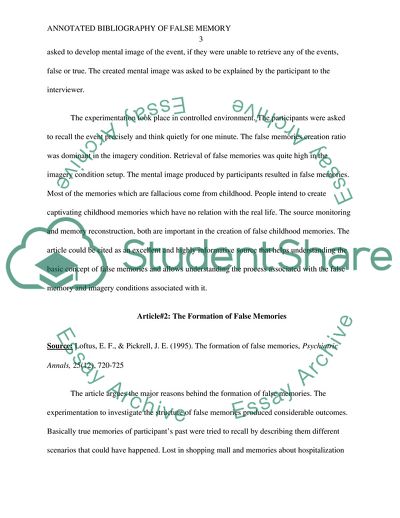Cite this document
(Compiling the Bibliography of False Memory Annotated Example | Topics and Well Written Essays - 2250 words, n.d.)
Compiling the Bibliography of False Memory Annotated Example | Topics and Well Written Essays - 2250 words. https://studentshare.org/psychology/1795184-annotated-bibliography-on-false-memories
Compiling the Bibliography of False Memory Annotated Example | Topics and Well Written Essays - 2250 words. https://studentshare.org/psychology/1795184-annotated-bibliography-on-false-memories
(Compiling the Bibliography of False Memory Annotated Example | Topics and Well Written Essays - 2250 Words)
Compiling the Bibliography of False Memory Annotated Example | Topics and Well Written Essays - 2250 Words. https://studentshare.org/psychology/1795184-annotated-bibliography-on-false-memories.
Compiling the Bibliography of False Memory Annotated Example | Topics and Well Written Essays - 2250 Words. https://studentshare.org/psychology/1795184-annotated-bibliography-on-false-memories.
“Compiling the Bibliography of False Memory Annotated Example | Topics and Well Written Essays - 2250 Words”. https://studentshare.org/psychology/1795184-annotated-bibliography-on-false-memories.


